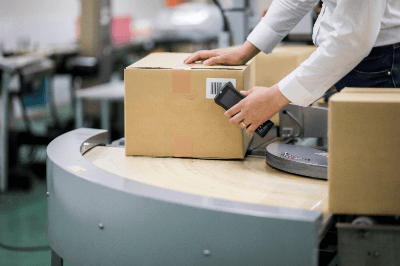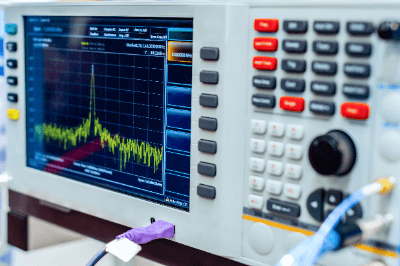What Is a Vacuum Pump?

A vacuum pump is a device used to evacuate air or gas from a device or container to create a vacuum.
A vacuum pump consists of a pump, an exhaust port, and an intake port. Many mechanisms have been developed for pumps to create a vacuum.
The Vacuum types can be divided into low, medium, and high. The appropriate vacuum pump to be used should be selected based on the required vacuum, the time required to reach the vacuum, and the temperature environment in which it will be used. Vacuum pump pumps can be classified into dry pumps and wet pumps, depending on whether or not oil is used.
Uses of Vacuum Pumps
Vacuum pumps are used in the manufacturing process of medical equipment and devices, food factories, electrical equipment, and semiconductors. They are also used as auxiliaries in medical and scientific equipment requiring vacuum. More than 10 different types of vacuum pump principles have been developed, each of which requires an understanding of its characteristics for proper selection.
The main applications of vacuum pumps are as follows
- Creation of the vacuum sections in thermos bottles
- Creating a vacuum environment when using plasma in semiconductor processes
- When bonding food packaging materials
- Vacuum source for scientific research equipment (evaporators, filtration, vacuum dryers, desiccators, etc.)
- Large capacity vacuum pumps for production equipment in factories
Principles of Vacuum Pumps
Vacuum pumps are classified according to their operating principles, and the most common operating principles are described below.
1. Oil-sealed Rotary Vacuum Pumps
The oil rotary vacuum pumps are a general term for a wet pump that uses oil to make it airtight. It is also called a rotary vacuum pump.
Detailed types include rotary blade oil vacuum pumps, cam-type oil rotary vacuum pumps, and oscillating piston-type oil rotary vacuum pumps. The shapes of the rotating blades, cam, oscillating part coupled to the piston, and the part in contact with air differ, but in all types, a vacuum is created by expelling air as the rotor rotates.
As long as oil is used, the oil vapor pressure is the limit of the vacuum, but the oil works to provide stable performance and a medium vacuum can be easily obtained with a small device.
2. Oil Diffusion Vacuum Pumps
The oil diffusion vacuum pumps consist of a boiler, a jet nozzle, and a condenser. Oil heated to vapor in the boiler is injected at supersonic speed by the jet nozzle, pushing air molecules inside the pump to the exhaust port. The vaporized oil becomes liquid oil in the condenser and is reused.
3. Rotary-Blade Dry Vacuum Pumps
Rotary-blade dry vacuum pumps are oil-free vacuum pumps in which the rotating rotor and vanes exhaust the air drawn in through the inlet port as if to scrape it out. Since the backflow of air cannot be prevented, low vacuum conditions are the limit, but large pumping speeds can be obtained.
4. Oscillating Piston Dry Vacuum Pumps
The oscillating piston dry vacuum pumps are vacuum pumps that exhaust air by pushing it out with a piston linked to an eccentric rotating shaft. Due to its structure, it cannot prevent air from flowing backward, so it is limited to low vacuum conditions, but maintenance is easy.
5. Diaphragm Type Dry Vacuum Pumps
A diaphragm pump (membrane pump) is a pump that conveys fluid by combining the reciprocating motion of a diaphragm made of rubber, resin, or metal with a check valve. When used as a vacuum pumps, the check valve eliminates the need to use oil for airtightness and allows the pump to be used as a dry pump. With reciprocating motion, air is repeatedly sucked in from the side to be evacuated and discharged to the atmosphere to create a vacuum.
6. Scroll Dry Vacuum Pumps
The scroll-type dry vacuum pumps are dry vacuum pumps that exhaust air through a combination of volute stator and rotor motion. The volute motion draws air to the center and exhausts it from the center.
7. Turbomolecular Pump
The turbomolecular pump is a dry vacuum pump in the form of a turbine. The turbine blades are rotated at a high speed, close to the thermal motion of molecules, to create a bias in molecular motion by the inclination of the turbine blades, thereby exhausting the air. To enable high-speed rotation of the turbine blades, the pump must be used in a certain degree of vacuum and is used in combination with other vacuum pumps.
How to Select a Vacuum Pump
In selecting vacuum pumps, the type of pump is determined based on the degree of vacuum attained, pumping time, and pumping capacity. There are three types of vacuum levels: low vacuum, medium vacuum, and high vacuum, and there are vacuum pumps for each.
1. Vacuum Pumps for Low Vacuum
For low vacuum, there are diaphragm dry pumps, oscillating piston dry pumps, and rotary blade dry pumps. Diaphragm dry pumps do not have sliding parts like rotary-blade dry pumps, so they do not generate particulate matter due to agitation and can produce a clean vacuum. The oscillating piston type has a simple structure and is easy to maintain. Rotating-blade-type pumps can achieve high pumping speeds.
2. Vacuum Pumps for Medium Vacuum
Scroll-type and oil rotary-type vacuum pumps are available for medium vacuum applications. Many scroll-type pumps use two-stage compression to ensure efficiency and are low-vibration and low-noise. As the name suggests, oil-rotating pumps are lubricated and sealed with oil, resulting in high efficiency and good vacuum stability.
3. Vacuum Pumps for High Vacuum
Vacuum pumps for high vacuum include the Roots type (mechanical booster). It’s vacuum pumps that rotate two rotors to suction and compress, the multi-stage Roots type vacuum pumps that integrate multiple Roots type pumps, and the oil diffusion type vacuum pumps that have a simple structure and high pumping speed. Furthermore, there are turbomolecular pumps and cryopumps for ultra-high vacuum applications.
Since there are so many different types of vacuum pumps, it is important to understand their features and characteristics and select the right one for your application.
How to Use a Vacuum Pump
For equipment that uses a vacuum, vacuum pumps are selected based on the degree of vacuum attained and the pumping time. However, because the pumping speed generally slows down as the vacuum level increases, and because some pumps for high vacuum cannot be used under atmospheric pressure conditions, vacuum pumps are sometimes used in combination rather than alone.
For example, by switching between a “low vacuum pump with a high pumping speed” and a “high vacuum pump” or using them together simultaneously, a certain amount of pumping speed can be obtained even with a high vacuum.
A concrete example is to use an oil-rotating pump to evacuate to a low vacuum range (coarse evacuation), and then switch to a mechanical booster pump to evacuate to a high vacuum (main evacuation).
In addition, two types of vacuum pumps may be connected and a pump for high vacuum may be used even at atmospheric pressure by intervening with a pump for medium and low vacuum.
 A handheld terminal is a portable terminal that can easily collect data recorded in barcodes and 2D codes.
A handheld terminal is a portable terminal that can easily collect data recorded in barcodes and 2D codes. A programmable display is a display/operation device with a built-in computer that can be programmed.
A programmable display is a display/operation device with a built-in computer that can be programmed.

